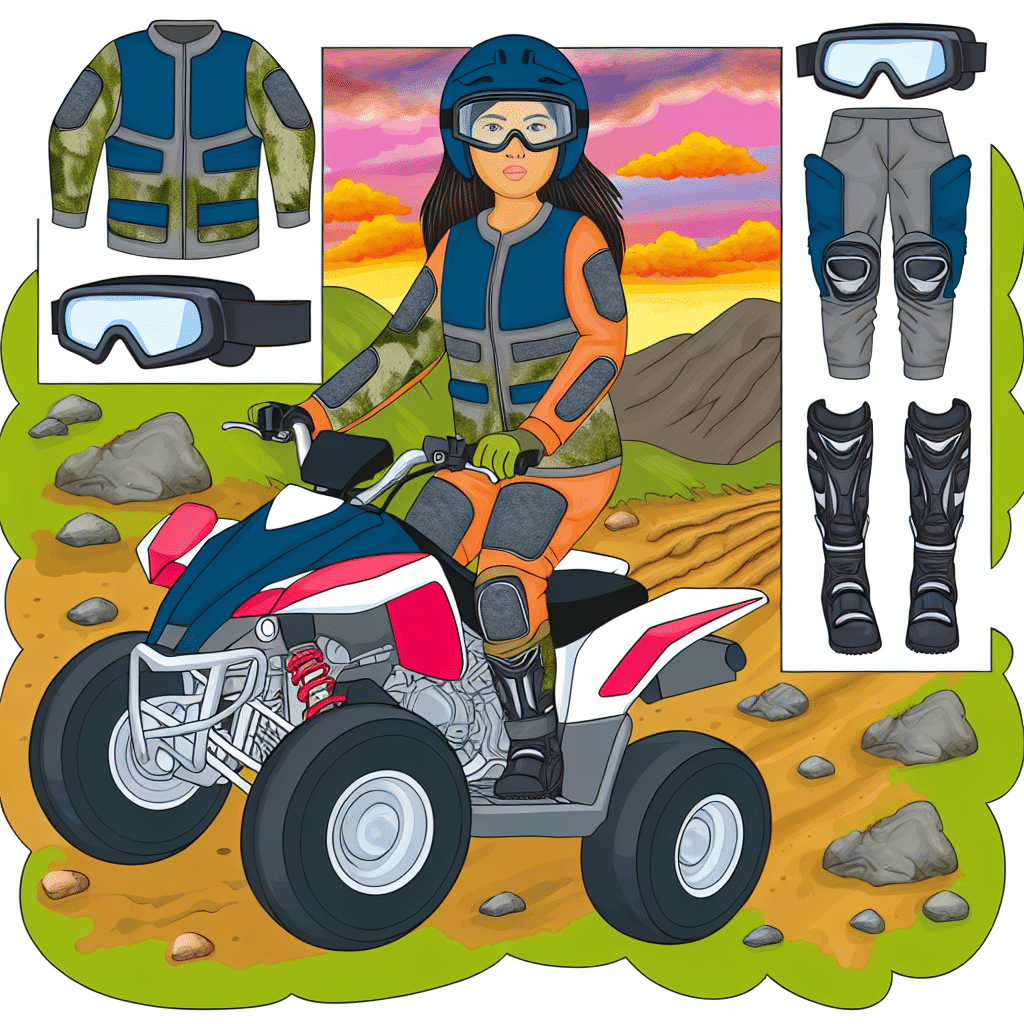ATV riding is an exciting outdoor activity that combines the thrill of speed with the exhilaration of conquering rugged terrains. However, like any high-adventure sport, it requires proper preparation and gear to ensure your safety and comfort. So, what do you need to wear when hitting the trails on your All-Terrain Vehicle? This comprehensive guide will cover everything from helmets to boots, giving you the confidence to tackle any landscape you set your eyes on.
Why is Proper Gear Essential for ATV Riding?
Before diving into specific apparel, it’s imperative to understand why appropriate gear is crucial. ATV riding subjects you to various elements — dust, mud, rocks, and unpredictable weather. Not only that, but the nature of the sport involves high speeds and potential collisions with obstacles. Thus, wearing the right gear can significantly enhance your riding experience and offer vital protection.
Head to Toe: What to Wear for ATV Riding
1. Helmet: Your Lifeline
The helmet is arguably the most important piece of gear when it comes to ATV riding. A good quality helmet can mean the difference between a minor accident and a severe injury.
– **Full-Face Helmets:** These provide the most comprehensive protection, covering your head, face, and chin.
– **Open-Face Helmets:** Although lighter and offering better visibility, they sacrifice chin protection and are generally not recommended for aggressive trails.
Look for helmets that meet DOT (Department of Transportation) or Snell safety standards.
2. Eye Protection: Keep Your Vision Clear
Riding an ATV exposes your eyes to dirt, wind, and debris. Goggles are more effective than sunglasses in this scenario.
– **Goggles:** Opt for ones with anti-fog and UV protection features.
– **Face Shields:** Some helmets come with built-in face shields, which also offer excellent eye protection.
3. Upper Body: Jackets and Jerseys
Your upper body requires robust protection to withstand scrapes, impacts, and harsh weather.
– **Riding Jackets:** Made from durable materials like leather or textile, these jackets often come with built-in armor for shoulders, elbows, and back.
– **Jerseys:** While not as protective as jackets, jerseys made from breathable material can offer comfort and minimal protection during less aggressive rides.
4. Gloves: Grip and Protect
Gloves serve a dual purpose: they improve your grip on the handlebars and protect your hands.
– **Material:** Choose gloves made from leather or reinforced synthetic materials.
– **Fit:** Ensure a snug fit; loose gloves can be cumbersome while tight ones can restrict movement.
5. Lower Body: Pants and Knee Guards
Your legs are vulnerable to the same harsh conditions as your upper body.
– **Riding Pants:** Durable materials like Cordura or Kevlar make excellent choices. Some pants come with built-in knee and hip protectors.
– **Knee Guards:** For additional protection, especially on rough trails, knee guards are highly recommended.
6. Footwear: Boots Matter
Regular sneakers or casual shoes won’t cut it for ATV riding. Opt for durable, high-ankle boots that offer both protection and stability.
– **Material:** Leather or synthetic materials with reinforced toe and heel protection.
– **Features:** Look for boots with non-slip soles and good ankle support.
Additional Gear for Enhanced Safety and Comfort
While the essentials are crucial, other accessories can further enhance your riding experience.
1. Neck Brace
A neck brace can prevent serious spinal injuries by limiting extreme head movement during a crash.
2. Elbow Guards
These provide additional protection for your arms, especially if you’re venturing into rocky or forested terrains.
3. Hydration Packs
Especially useful for longer rides, hydration packs allow you to stay hydrated without having to stop frequently.
Weather Considerations: Adapt to Conditions
Weather plays a significant role in determining what to wear for ATV riding.
1. Summer Riding
– **Breathable Gear:** Opt for gear that offers ventilation. Mesh jackets and jerseys can help keep you cool.
– **Hydration:** Always carry extra water, and consider wearing a hydration pack.
2. Winter Riding
– **Layering:** Dress in layers to maintain body heat. Thermal underwear can be a lifesaver.
– **Waterproof Gear:** Invest in waterproof or water-resistant jackets and pants to stay dry.
3. Wet Conditions
– **Rain Gear:** Keep a set of lightweight, packable rain gear in your ATV storage.
– **Waterproof Boots and Gloves:** Ensure your extremities stay dry to avoid discomfort and frostbite.
Conclusion: Ready to Hit the Trails
Knowing what to wear ATV riding can significantly enhance your safety and enjoyment. From helmets to boots, each piece of gear plays a vital role in ensuring you are adequately protected against the unpredictable nature of the sport. So, gear up appropriately, respect the trails, and enjoy the thrill of your ATV adventures with confidence and peace of mind.
By adhering to these guidelines, you’re not just investing in your safety; you’re also making the most out of your ATV riding experience. Happy riding!




